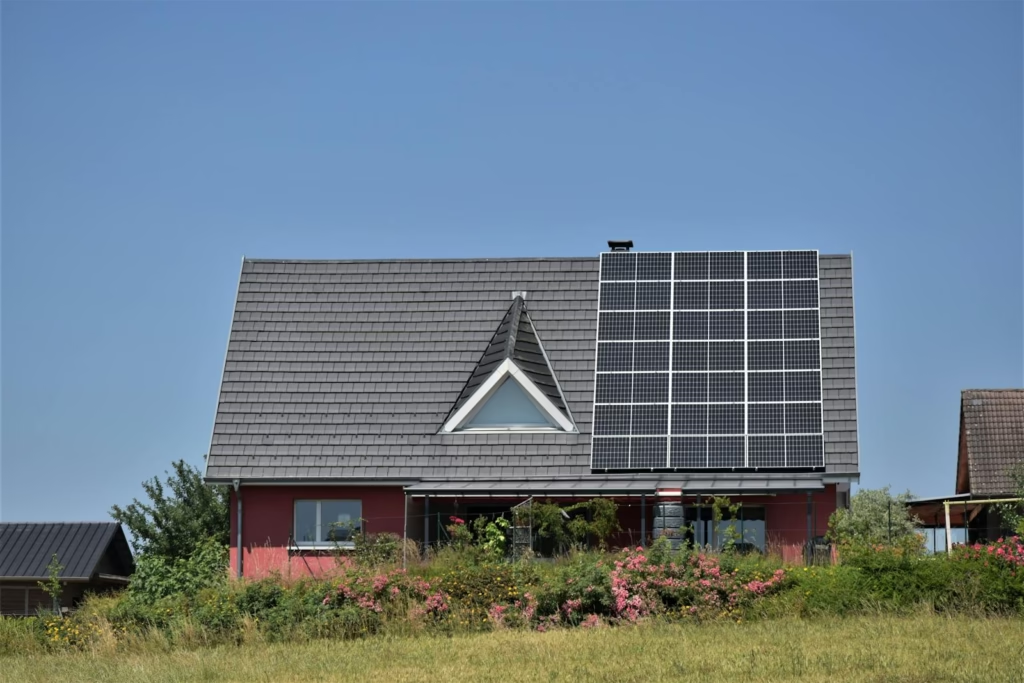As the world increasingly turns to renewable energy, solar technology has become a popular choice for homeowners and businesses looking to reduce their carbon footprint. Both solar panels and solar roof tiles use photovoltaic (PV) technology to harness sunlight and convert it into electricity. However, the choice between the two often depends on several factors, including building type, sun exposure area, and budget. This article explores the differences between solar roof tiles and solar panels, helping you make an informed decision.

Understanding Solar Panels and Solar Roof Tiles
Solar Panels
Solar panels are perhaps the most recognizable form of solar technology. They consist of PV cells mounted on brackets that are installed over existing roof tiles or slates. These panels are designed to generate electricity efficiently, making them a popular and cost-effective option for those looking to embrace solar energy without major structural changes to their home or building.
Solar Roof Tiles
Solar roof tiles, on the other hand, represent a more integrated approach. These are essentially small, advanced solar panels that are installed alongside traditional roof tiles or used as a replacement for them. Designed with aesthetics in mind, solar roof tiles blend seamlessly into the roof structure, offering a visually appealing alternative to conventional solar panels.
Comparing Solar Panels and Solar Roof Tiles
1. Design and Aesthetic Integration
- Solar Panels:
Solar panels are known for their bulky design. They protrude from the roof, which can detract from the appearance of a building. They are typically available in black or blue, offering limited options for customization. While effective, their utilitarian design may not suit homeowners who prioritize aesthetics. - Solar Roof Tiles:
Solar roof tiles, by contrast, are designed to harmonize with a building’s architecture. They can be customized to match or replicate the look of traditional roof tiles, making them an ideal choice for those who value the appearance of their property. These tiles can seamlessly blend into an existing roof or be installed as part of a new roof design.
2. Installation Compatibility
- Solar Panels:
One of the biggest advantages of solar panels is their versatility. They can be installed on almost any type of roof, regardless of pitch or angle. This makes them a practical choice for a wide range of buildings, from homes to commercial properties. - Solar Roof Tiles:
Solar roof tiles are more specific in their requirements. They are best suited for new roofs or when replacing an existing roof, as they require a certain pitch and slope to function optimally. Unlike panels, they cannot be easily angled or adjusted after installation.
3. Durability and Maintenance
- Solar Panels:
Solar panels are relatively easy to maintain and repair. If a panel is damaged, it can be replaced individually without significant disruption to the overall system. - Solar Roof Tiles:
The integrated nature of solar roof tiles makes maintenance more challenging. Replacing a damaged tile can be a complex process, potentially requiring the removal of surrounding tiles to access the affected area.
4. Cost Considerations
- Solar Panels:
Solar panels are generally more affordable, both in terms of materials and installation. For budget-conscious homeowners or businesses, this makes them an attractive option. - Solar Roof Tiles:
Solar roof tiles are significantly more expensive. They use cutting-edge technology and are less common, which drives up both material and labor costs. This makes them a better choice for those who can afford to prioritize aesthetics and integration over cost.
5. Energy Efficiency
- Solar Panels:
Solar panels typically have a minimum efficiency of 16%, making them highly effective at generating electricity. They can produce more energy using less roof space compared to tiles. - Solar Roof Tiles:
Solar roof tiles have a typical efficiency range of 10-20%. While they can be effective, their lower efficiency means they may not produce as much electricity as panels for the same roof area.
6. Ideal Users
- Solar Panels:
Solar panels are ideal for building owners who want a cost-effective solution and do not need to replace their existing roof. They are also a great choice for those looking to maximize energy output on a budget. - Solar Roof Tiles:
Solar roof tiles are perfect for homeowners who prioritize aesthetics or are already planning to replace their roof. They are also well-suited for projects where the roof design can incorporate solar technology seamlessly.
Conclusion
When deciding between solar panels and solar roof tiles, there is no one-size-fits-all solution. Both options have unique advantages and disadvantages. Solar panels are more affordable, versatile, and efficient, making them suitable for most projects. On the other hand, solar roof tiles offer a sleek and integrated design, making them a better choice for those who value aesthetics or are building a new roof.
By considering your specific needs—whether it’s budget, design preferences, or energy efficiency—you can choose the solar solution that best suits your home or business.
